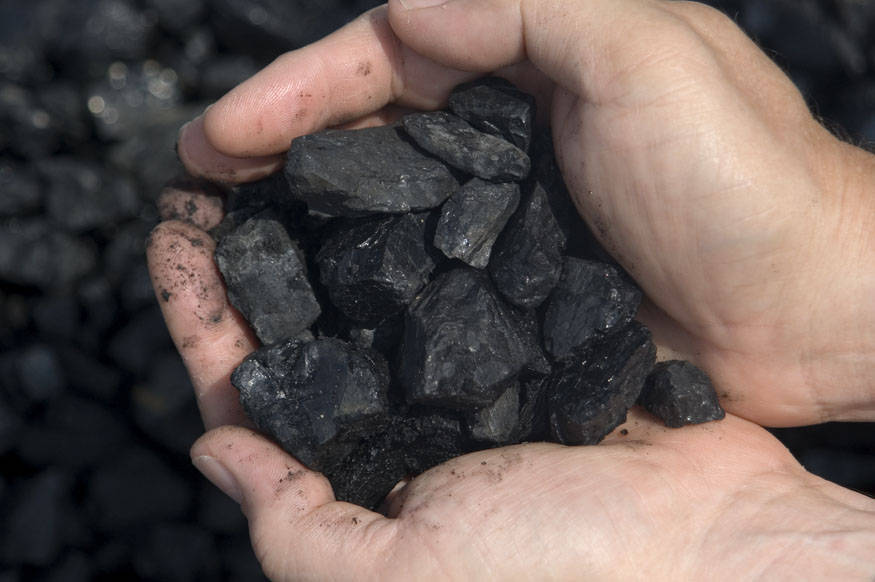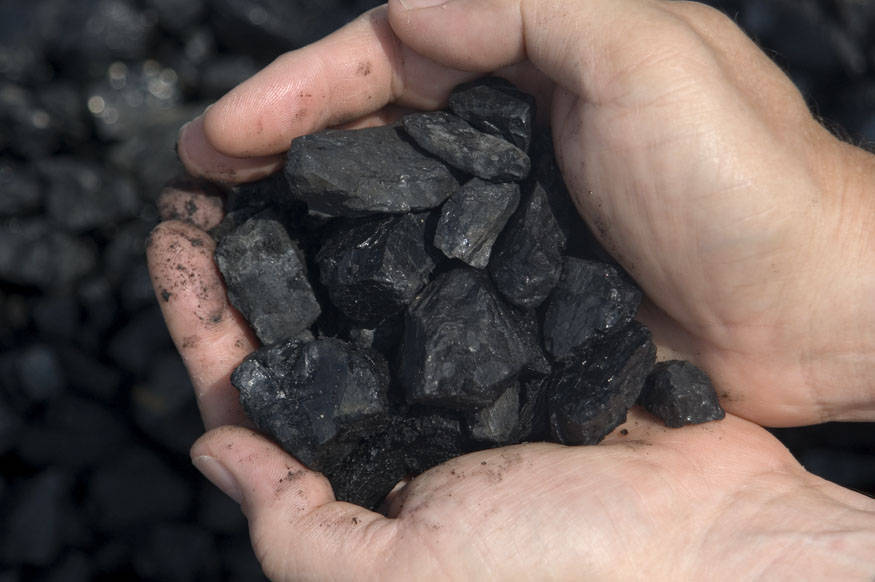Vivek Kaul
It’s always about timing. If it’s too soon, no one understands. If it’s too late, everyone’s forgotten – Anna Wintour
For their threats to be credible it is important that the trade unions get their timing right. Gurudas Dasgupta, the general secretary of the All India Trade Union Congress, has clearly got the timing all wrong, in trying to derail the government’s initiatives for sorting up the mess in the coal sector.
The government has promulgated an ordinance which will give it the power to e-auction coal blocks. The Supreme Court in a decision given in September 2014 had cancelled the allocation of 204 out of the 218 blocks that various governments since 1993 had allocated to companies for captive consumption.
These blocks will now be auctioned. And this hasn’t gone down well with Dasgupta and other trade union leaders who have threatened to protest and possibly even go on a strike. Dasgupta said that the government decision on coal blocks is “a backdoor entry for taking over the entire coal sector by the private corporates”.
Jibon Roy, the general secretary of the All India Coal Workers Federation (AICWF) said that “to protest against the enabling provision and proposed e-auction, the workers would stage nationwide dharna on November 5 to 7.”
The decision to allot coal blocks to private players for captive consumption was made in 1993. The idea, as the Economic Survey of 1994-1995 pointed out, was to “encourage private sector investment in the coal sector, the Coal Mines (Nationalisation) Act, 1973, was amended with effect from June 9, 1993, for operation of captive coal mines by companies engaged in the production of iron and steel, power generation and washing of coal in the private sector.”
This allowed private companies engaged in the production of iron and steel, power and cement to own coal blocks for their captive use. Hence, if a coal block had been allocated to a power plant, the coal produced needed to be passed on to the power plant.
In 1993, the government allocated only one coal block. Until 2002, the government had allocated only 19 coal blocks in total. The allocation of coal blocks picked up since 2003. During that year 20 coal blocks were allocated. A considerable number of these blocks were allocated to private companies for captive consumption.
The question is why are the trade unions protesting now? The allocation of coal blocks to private companies had been on for a while. The government has decided to go in for an e-auction of the coal blocks after the Supreme Court cancelled most of the allocations that had been made. Hence, only the method of allocation has changed and not its purpose. So why are the trade unions protesting now?
Further, the process of auctioning is transparent, unlike the earlier “screening committee” method of allotment which was fairly opaque as well as arbitrary, leading to crony capitalists gaining in the process. Also, the government has decided to hand over the money raised from the auction to the state government where the coal block is based. Why have the unions got a problem with all this?
The government has also said that sometime in the future it will allow private companies to commercially mine coal. Currently only the government owned Coal India is allowed to do that. The trade unions are bound to have a problem with this. As Dasgupta put it “We strongly protest and call upon the government to reverse the decision as there is an enabling clause in the Ordinance which gives rise to concerns and apprehensions of sweeping privatisation of coal sector.”
This, Dasgupta said could lead to “serious industrial disturbances,” and added that allowing private companies to commercially mine coal would jeopardise “national interest” and weaken Coal India.
Let’s look at this statement of Dasgupta in detail. Coal India had an average manpower of 4,76,577 individuals in 2004-2005. Since then the number of employees has constantly come down. In 2013-2014, the average manpower stood at 3,52,282. The number has fallen further, and as on August 31, 2014, it stood at 3,39,769 individuals.
Hence, between 2004-2005 and 2013-2014, the total manpower of Coal India came down by 26% and the unions haven’t been able to do anything about that. During the same period, the total production of coal went up by 43% from 323.58 million tonnes to 462.42 million tonnes.
So, the coal production went up despite the number of employees coming down.
This has happened due to two reasons. Coal India was overstaffed and has not been filling up the posts of retiring employees. Further, over the years Coal India has been extracting more and more coal by outsourcing work to private contractors. Between 2010-2011 and 2013-2014, the contractual expenses of Coal India jumped by 47.9% to Rs 7,812.71 crore. These expenses came in third after salaries and and provident fund expenses of employees.
A major part of coal is now extracted through outsourcing to private contractors. The private contractors don’t have to pay their employees as much as Coal India does to its workers, and hence coal is extracted at cheaper rates than it would be if employees were to do the job.
Over and above this, what is interesting is that some of the subsidiaries of Coal India, which have the least number of employees, produce most of its coal. Take the case of Mahanadi Coalfields Ltd. As on August 31, 2014, it employed 22,206 individuals or 6.5% of the total number of people working for Coal India. During the course of 2013-2014 it produced 114.34 million tonnes of coal or nearly one fourth of the coal that was mined by Coal India.
Or take the case of Northern Coalfields Ltd. The company employed 16,515 individuals as on August 31, 2014 or around 4.86% of the total number of people working for Coal India. In 2013-2014, it produced 72.11 million tonnes of coal or around 15.6% of the total coal produced by Coal India.
This is primarily because these companies have taken to outsourcing. Also, the coal mines of Northern Coalfields are highly mechanised. Now let’s compare this to Eastern Coalfields Ltd, which employs 70,191 individuals or around 20.7% of the Coal India total. In 2013-2014, it produced just 36.25 million tonnes or 7.8% of the coal produced by Coal India. The same was the case with Bharat Coking Coal, which employed 17% of total Coal India employees but produced only 7.4% of coal that was produced.
One reason for this is that a lot of mines run by Eastern Coalfields and Bharat Coking Coal are underground mines, where the technology used to mine coal is still very labour intensive.
Also, the trade unions are stronger in this part of the country (Eastern Coalfields is head-quartered at Sanctoria in West Bengal and Bharat Coking Coal at Dhanbad in Jharkhand, but right on the Bengal border) and that is another reason why these companies employ so many people to produce a minuscule amount of coal in comparison to other subsidiaries of Coal India.
Dasgupta feared that recent moves of the government were “a backdoor entry for taking over the entire coal sector by the private corporates”. But as far as coal mining is concerned that has already happened. Dasgupta and others of his ilk should have started protesting many years back. This protest has come too little too late. It is interesting nonetheless to observe that the contractual expenses of Eastern Coalfields have risen by 117% since 2009-2010.
Coal India has privatized a major part of coal mining and is reaping in tremendous benefits because of the same. As on March 31, 2014, it had cash and bank balances amounting to Rs 52,389.93 crore.
The number would have been greater than Rs 70,000 crore had the company not been forced to give a dividend of close to Rs 20,000 crore to the government to help control the fiscal deficit. The fiscal deficit is the difference between what a government earns and what it spends.
It needs to be pointed out that the country needs more coal right now than what is being produced. Despite having the fifth largest coal reserves in the world of 301.6 billion tonnes, India was the third largest importer of coal in 2013-2014 at 104.7 million tonnes. What this tells us is that Coal India, which produces most of the coal produced in the country, hasn’t been able to keep pace.
In fact as of last week 64 out of 103 power plants had a coal inventory of less than a week. Between 2010-2011 and 2013-2014, the rate of coal production of Coal India increased at a minuscule rate of 1.76% per year.
To conclude, it is important that India produces more coal. For this, the monopoly of Coal India needs to be broken and private players (including foreign players) need to be allowed to commercially mine coal.
As Dasgupta said allowing private players would “weaken” Coal India. That is precisely what needs to happen, for the country as a whole to produce more coal. The comparable example for this is what happened after private telecom players were allowed to offer services. Despite the scams and the controversies that have happened over the years, the tele-density increased big time. Why shouldn’t that happen in the coal sector as well? Maybe Dasgupta has an answer for that.
The article originally appeared on www.FirstBiz.com on Oct 22, 2014
(Vivek Kaul is the author of the Easy Money trilogy. He tweets @kaul_vivek)

